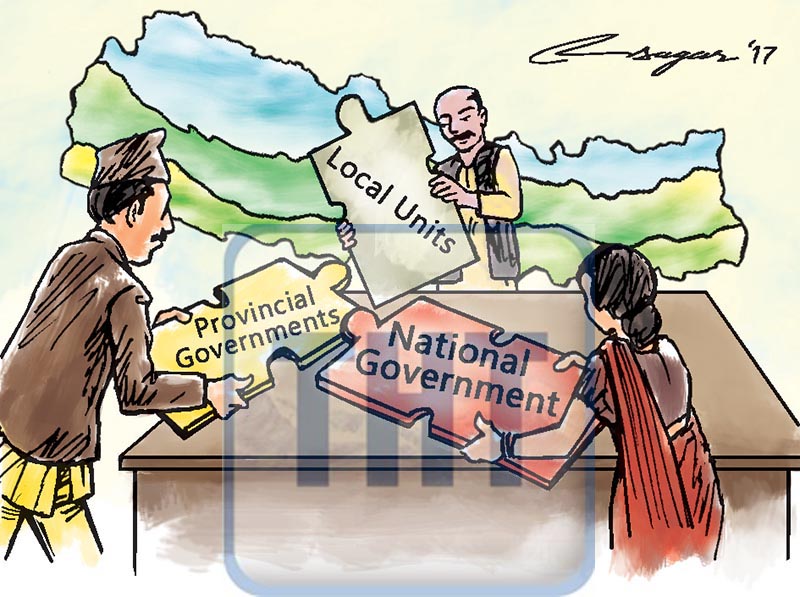Grassroots democracy: Services to doorsteps
The current situation in many local level units is one of confusion, which has forced them to take a ‘muddling through’ approach. This is coupled with issues that have yet to be properly addressed
The completion of the final phase of local level elections in September has returned the democratic mandate to the local government sector after a hiatus of 20 years. It is a marvellous achievement, as this takes governance to the grassroots, ensuring state services to the people’s doorsteps. The completion of the local elections has put the country on the path of true democratisation of local units.
Although local governments have ample opportunities to effect a meaningful change, there are some challenges. The current situation in many local units is one of confusion, which has led to a “muddling through” approach. This is coupled with issues that have yet to be properly addressed, including high expectations for changes promised during the campaigns, new and inexperienced representatives learning on the job and a lack of institutional memory and technical capacity at the local level.
In reality this should not come as a surprise, considering that there has been virtually no transition from the old to the new system, and that the changes to the local government sectors’ operations and responsibilities are extensive. Local governments now have fundamentally different powers and responsibilities, and this demands development of new and different relationships between other local government units and with the soon-to-be federalised national and provincial governments, as equals.
The issues with the transition were exacerbated by the introduction of a profoundly new structure alongside the changing roles. The district, for example, has moved from being the primary local government level service provider to an institutional unit now primarily responsible for coordination and monitoring functions. The rural municipalities (former VDCs) now have virtually the same level of power and responsibility as the municipalities for service provision and local policy development.
Until the recent ‘Local Government Operation Act’ there was no federal law to operate the new local government mechanism. The constitution requires subordinate legislation to compel institutions to follow its intent, rather than working as a piece of legislation in itself as constitutional documents do in some countries. This requirement for subordinate legislation to give effect to policies also flows down to every part of the local government sectors responsibilities; thus, new policies, laws, regulations, procedures and standards are required. At present, this local legal framework is largely non-existent, and the technical capacity to create the new legislation is lacking.
There are issues of accountability and transparency around the new structure. There are no established systems for checks and balances, codes of conduct for leadership to follow or performance measurement systems in place to ensure local government is following its mandate. At the policy level, there are for the most part, no local visions and/or long-term plans in place—although local governments have the power to create these.
In terms of finance the local units remain largely dependent on the approximately 15 per cent of internal revenue collected for them by the central government (albeit with the option to levy certain local tariffs and taxes). Without true fiscal autonomy, local units cannot truly be effective representatives of the wishes of the local populace, and could be manipulated by other tiers of government and/or international donor organisations into supporting projects that are not local priorities.
It can be observed that the current situation for local government is problematic. However the key issue right now is that each local government unit is acting alone with minimal guidance, and that more information is needed to gain an accurate understanding of the current situation for each local unit. It would be prudent for an accurate capacity and needs assessment to be undertaken across all local government units to measure where they are now, to gain a realistic picture of what resources and institutional knowledge currently exists and to determine what additional capacity is required to realistically allow local government to prosper.
The potential for local government to improve the quality of life for people is substantial, and as the level of government closest to the people, it is fitting that they have been given greater autonomy and have a wider range of decision making power given to them. This allows local government to tailor make and provide services for their citizens in areas ranging from local development planning and infrastructure to health and education. With genuine citizen engagement and participation at the local level, the projects that genuinely matter to the local population could finally be achieved.
Finally, the system needs to ensure that local government remains above party interests and politics.It is being increasingly recognised globally that effective local government is the most important level of government to effect genuine changes, as evidenced by the desire of the United Nations to “localise the Sustainable Development Goals”.
We hope that the representatives elected from the recently held federal and provincial elections will work very carefully to achieve the potential of a decentralised local government to ultimately retain faith in local democracy in Nepal.






